Year after year energy-saving lamps are gaining increasing popularity. They are actively used for lighting housing, as well as industrial and office buildings. Such popularity of such lamps is explained by the natural desire of people to pay less for the expenditure of electrical energy. And, it would seem, saving on the face. But let's try to find out if the energy saving lamps are so economical.
Many users energy saving lamps will answer the question about saving money negatively. They argue their answer by saying that powersave lamp rather early out of order, while not working out the service life, which was stated on the packaging of their manufacturer. Means the considerable means spent for its acquisition have not paid off energy which with its help it was possible to save.
It can be argued that if properly operated energy-saving lamps, they will not fail before the deadline. Let's try briefly to deal with the issue of proper operation of such lamps.
The main and main reason for failure energy-saving lamps, is their non-compliant operation. The first thing to remember is that you can not twist the lamp with your hand on its spiral or flask. In this case, incorrectly screwed lamp, can simply burst in the place where it connects to its base.
The second reason for premature exit energy saving lamp out of order is its use in rooms with high humidity. To use as an illuminating device of such premises, only lamps having special protection must be used. This should be indicated on the package energy saving light bulb. Otherwise, it will quickly fail because of corrosion of its main elements.
Another serious cause of premature and unexpected failure energy saving lamps can be considered become very popular in recent regulators, allowing you to control the brightness of the glow of this electrical appliance. But very few people take into account the fact that this type of lamp was originally designed only for work with pre-defined parameters of power grid parameters. Any change in the brightness of the glow energy saving lamp leads to a significant reduction in its service life.
The following that shortens the service life energy saving lamps is the failure to comply with the temperature regime of its operation. The range of ambient temperatures recommended for use is usually indicated on its packaging. If you do not follow these instructions and use energy saving lamp at a reduced or elevated temperature, then this can lead to its premature failure.
An important question is how to install energy saving lamp in the lamp. If this happens with the cap up, then during operation of such a lighting device, due to the fact that the heat necessarily rises, the electronic unit may overheat bulbs. It is also able to shorten its service life.
Always remember that the service life energy saving lamp, which is declared by its manufacturer implies its continuous operation. The lamp can work the longer, the fewer shutdown and on-off operations have been performed. This is explained by the fact that at the moments when the inclusion energy saving lamp all its elements work in overload mode.
For the duration of the work period energy saving lamp influence and a sharp decrease or increase in voltage in the electrical network, which, unfortunately, very often occur in our country. Such voltage surges significantly shorten the life of such a lamp.
Thus, having an idea of the factors that can significantly reduce the duration of work energy saving lamp, you can try to avoid them, thereby to achieve from this electrical appliance the maximum effect of saving your money.
(20664) - Oleg Sukhonos, March 14, 2008
Recently, electricity prices make you think about saving it. And to choose on what to save, especially not from what. Almost the only option - save on lighting. In fact: do not buy the same new more economical refrigerator instead of working properly. A bulbsthey fail regularly and in any case they have to be changed. And if you really change, then immediately at the economical. You can not even wait until the available bulbs burn out. Here is just one problem: very much expensive energy-saving lamps. Besides, having visited a guest from those who set himself such a miracle, you could notice that the room is very dark. And the light is somehow unnaturally blue. And your friend put such a light bulb, but she burnt in six months. What to do? To be or not to be? Let's understand ...
Compact Fluorescent Lamps
This is one of the types you know well fluorescent lamps (« fluorescent lamps"), Which are often used to illuminate institutions - such white luminous tubes, usually located in luminaires of 2 or 4 pieces. But for the home, such lamps are inconvenient, because they take up a lot of space. And for the eyes they are not particularly useful, tk. flicker with a sufficiently low frequency of 100 Hz. And the throttles are buzzing. But these lamps are very economical.
Compact fluorescent lamp combines in one device the dignity of fluorescent lamps and ordinary incandescent lamps. The long tube is folded into a compact spiral or arc, and the ballast, unlike industrial luminaires, is located directly in the casing. The plinth is made compatible with conventional lamps.
Such a lamp can be screwed in place of an ordinary bulb. And produced compact fluorescent lamps with socles two common standard sizes - the usual ( E27) and "minion" ( E14). And due to the high frequency of electrical discharge (tens of kilohertz), such lamps do not flicker and do not hum.
Compact fluorescent light bulbs are also manufactured with a balloon similar to a conventional lamp (the names of such lamps contain the letters GLS). But they have lower light output and less life.
Luminescent lamp power
Consumers are accustomed to incandescent lamps and it is difficult for them to understand, what power should be a compact fluorescent lampto replace here in this room a hundred-watt lamp, and in this closet - forty-watt. Producers understand this and try to help people - they draw a table of conformity of capacities. Here only at each manufacturer these tablets different and all of them a little correspond to the validity. The fact is that you do not need to compare watts, but light flows. Unfortunately, the light flux of a lamp depends on many factors - the shape and material of the spiral, the shape of the balloon, the composition of the phosphor, matting, etc.
Approximate matching of powers and light fluxes is given below.
Incandescent lamps
|
Power, W |
Light flow, lm |
A typical St. flow, lm |
Tubular Compact Fluorescent Lamps
|
Power, W |
Light flow, lm |
A typical St. flow, lm |
Compact fluorescent lamp GLS
|
Power, W |
Light flow, lm |
A typical St. flow, lm |
Here only the most common capacities are listed. There are also intermediate values - 10, 13, 18, 21 W, etc.
Thus, we can draw up an approximate correspondence table:
|
Power of an incandescent lamp |
The power of a compact luminescent lamp similar in light flux |
|
|
tubular |
||
It can be noted that the recommendations of manufacturers ( compact fluorescent lamp power = lamp power divided by 5) sometimes corresponds to reality, however, for typical 100 and 75 W power it is better to choose a quadruple divider.
In fact - in all advertising materials write that a 20-watt compact fluorescent lamp corresponds to a 100-watt lamp. However, we see that even the best samples of a 20 W compact fluorescent lamp have a luminous flux less than the worst samples of 100 W incandescent lamps. Hence the complaints of consumers that compact fluorescent lamps give less light.
Why does this happen? Yes, because it's marketing. The manufacturer needs to sell his products, and he's a little cunning. Compare its products not with typical incandescent lamps, but with the worst samples. Formally, he does not lie, but we are not lighter from this.
There is another trick used by unscrupulous producers. For example, the Chinese company Delux. I bought them for testing their light bulb and was immediately surprised by its dim light. Has measured power consumption. It turned out that a 13-watt lamp consumes 11 watts! It turns out that the bulb of the 13-watt lamp is equipped with electronics from 11-watt. Unsurprisingly, it is dull - the power of electronics is simply not enough to "swing" the balloon to normal brightness.
After such business I decided to measure the energy consumption of Maxus lamps. He measured and was surprised. The tulle in the tunic corresponds to the specified manufacturer.
It should also be taken into account that over time, the phosphor "burns out," the electrodes lose their emission and, at the end of their service life, the lamp shines weaker. How much weaker - hard to say. Phillips writes that by 20%, OSRAM - by 5. I think that when choosing a lamp you need to focus on 20-25 percent.
When choosing a lamp, note that on the boxes for advertising purposes the maximum values of parameters are written. For example, when buying a lamp, I looked at what light it had. The box says - 1650 lumens, and checking the data on the manufacturer's website, found that the light flux of the lamp is 1550-1650 lm.
Features of fluorescent lamps
Immediately after switching on fluorescent lamps they do not shine in full force - they need one or two minutes to "flare up."
In tubular fluorescent lamps, the main light output is perpendicular to the axis of the lamp, so the distribution of illumination will change in comparison with incandescent lamps; To save it, use bulbs with a GLS ballon.
Energy Saving Light Bulb have a large light-emitting surface than incandescent lamps, so the light turns out to be softer, without sharp shadows, which reduces eye fatigue. However, here there is a drawback - in crystal chandeliers such lamps look bad - crystal likes bright point lights.
The dimensions of energy-saving lamps are larger than those of incandescent bulbs, so pay attention to this before purchasing. Otherwise, it may happen that the bulb will look out of the plafond or in general it will not fit into it.
Manufacturers of energy-saving lamps forbid to connect them through switches with illumination - although a very weak current passes through the backlight circuit, it is enough to charge the capacitor of the lamp start circuit, so the lamp "blinks" every few seconds. This dramatically reduces the life of the service. If the light of the switch is still needed, it will be necessary to slightly modify the circuit for switching on the lamp. There are several options:
On the lamps with several lamps connected in parallel, it is enough to screw into one of the cartridges a normal incandescent bulb of any power
On a double switch and a multicolored chandelier, it is possible to screw an energy-saving lamp in the frequently used part of the chandelier, and leave incandescent lamps in the included "for large holidays". Backlight hang on the half of the switch, which turns off the incandescent lamp.
Parallel to the energy saving lamp in the plafond, install a shunt resistor of 33 kΩ with a power of 2 W.
Parallel to the energy saving lamp, install a 0.1 μF capacitor for a voltage of at least 400 V.
Replace the neonka and the resistor in the backlight so that the passing current is not more than 0.1-0.3 mA.
Switch on the light of the switch not in series with the lamp, but in parallel. Unfortunately, in most switches, you will have to pull a separate "zero" wire from the nearest socket or box.
Why is the light from the energy-saving lamp blue?
Unlike conventional lamps, energy-saving lamps have the ability to vary color due to different phosphor. And the color is denoted in degrees Kelvin. This is the so-called "color temperature", which shows what color the body will shine, heated to the designated temperature.
The most commonly used phosphors with color temperatures of 2700, 4000, 6400. And different manufacturers can call the same color temperature in different ways.
2700 K - «Warm white» color. It is slightly yellowish and roughly corresponds to the color of a conventional incandescent lamp
4000 K - "Natural" / "Day" / "White". White color without yellowish tinge
6400 K - "Daylight" / "Cold" / "Cold White". White with a bluish tinge.
For the house, the warm white color is the most familiar, as with incandescent lamps. White color is also very good, it turns out this kind of lighting, as if for you personally in a separate room there was a bright time of day. Cold Color - this is an amateur. Although, such people are also lacking and it is possible that this color will be the most pleasant for you.
In general, before buying a lamp in a store it is very desirable to look at its real color. It happens that, in spite of the 4000K letters written, the lamp gives a more blue color than 6400K on other lamps. This basically affects the cheapest lamps with a bad phosphor and unnatural color rendition. Take into account that under such light the faces acquire a very unpleasant cyanotic color. Especially if you followed the manufacturer's advice and bought a weak bulb. Lighting for the horror film.
The color temperature is indicated on the lamp box and in its designation. Usually only two first figures of the color temperature are written in the lamp designation. Most often, the color temperature is the last digit in the designation. For example: FLE11TBX / XM / 827 - color temperature 2700.
Service life of energy-saving lamps
A typical lamp serves about 1000 hours. This is a generally accepted standard. It is believed that when using a light bulb an average of 3 hours a day, it should work for a year.
Luminescent energy saving lamps last much longer. How much exactly depends on the manufacturer and the type of lamp. There are usually several versions of lamps. For example, at General Electric, the service life ranges from 3000 hours (the Start model) to 15,000 hours (Extra), and OSRAM makes lamps with a lifetime of 10,000 and 15,000 hours.
The average service life in this case means the time after which 50% of the lamps will still be shining.
Again, on the boxes, not the average, but the maximum service time can be indicated. For example, 12000 hours on the box, and on the manufacturer's website specification: 8000 - medium, 12000 - maximum. Check with the original sources.
In addition to the time of direct burning of the lamp for the service life, the number of on / off switches also affects. How much the service life is shortened is difficult to say. No one specifies this value separately. The maximum that can be found is the parameters of the test cycles of the lamps. For example, OSRAM has 90 minutes on, 15 minutes off. Lamps OSRAM series LongLife withstand half a million of these cycles, the usual series - 10,000 cycles. Therefore, it can be assumed that one on / off of a typical high-quality energy-saving fluorescent lamp reduces the life span by 1-1.5 hours.
It is much more harmful for energy-saving lamps to turn it off and then turn it on - the delay circuit does not work and the electrodes are immediately supplied with full voltage, which has a very negative effect on the service life.
Lamps with a GLS ballon have a life expectancy one-third less than tubular ones.
Manufacturers of energy-saving fluorescent lamps
The most famous manufacturers - OSRAM(Germany), General Electric (USA), PHILIPS(Netherlands).
Safety precautions when working with energy-saving fluorescent lamps
When screwing the bulb into the cartridge, it should be held not by the tubes, but by the body. Producers write about this on the package, but not all read it. You can screw, of course, and the tube, but very carefully and without putting much effort.
If the light bulb all the same cracked or crashed - gather all the pieces and well ventilate the room - the inside of the lamp contains toxic mercury vapor.
Although the fluorescent lamp emits several times less heat than the lamp, it contains electronic components inside it, which are afraid of overheating. Therefore, it is not recommended to use a fluorescent lamp in fully enclosed plafonds.
In connection with the popularization of energy-saving lamps, there is a growing need to debunk the myths about this device. Some sources say about the harmlessness and economy of this device, while others - about the harm to health and the inefficiency of energy saving. In this article, we will try to understand how the energy-saving lamps work and the appropriateness of buying so-called "economists".
Device and principle of operation of energy-saving lamps
The principle of operation of a conventional energy-saving lamp resembles a fluorescent lamp. The main components of energy-saving lamps:
- ballast;
- fluorescent bulb.
A conventional energy-saving lamp differs from a fluorescent lamp with the presence of an electric ballast.
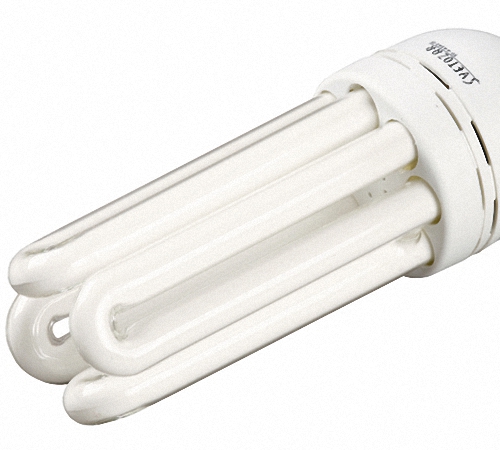
Fluorescent bulbs are U-shaped or spiral forms. The internal walls of the bulb have a phosphor coating and consist of two spirals, which are sealed at the end of the tube. When the ESL is heated, the electrons emerge on the surface of the spiral. Between the spirals there is a great stress and ultraviolet radiation is released in the mercury vapor, which ensures the illumination process. The amount of mercury in the phosphor depends on the color of the lamp's glow. The line of operation of ESL is from 6000 to 15000 hours.
The scheme of the energy-saving lamp with a power of 11 W:
- antijamming choke;
- fuse;
- diode bridge;
- filtering capacitor.
Varieties of energy-saving lamps
Some sources are called energy-saving lamps, only fluorescent lamps, but this is wrong. After all, an energy-saving lamp has the right to be called any device that has good light output, but at the same time consumes a small amount of electricity.
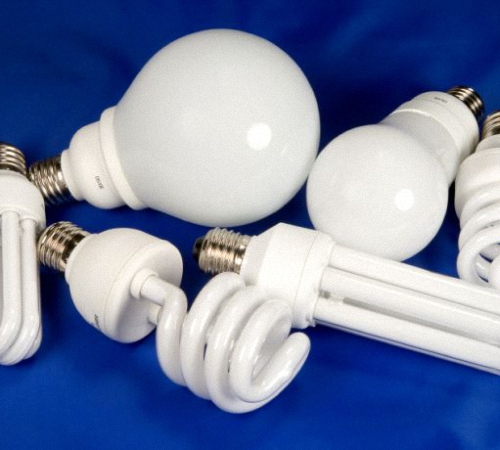
Therefore, energy-saving lamps are:
- fluorescent lamps of compact type;
- linear fluorescent lamps;
- some varieties of LED lamps.
The latter option has more advantages than conventional fluorescent lamps. LED lamps do not contain mercury and other substances hazardous to human life. The light output of LED lamps is much higher, and the mechanical strength ensures a long and trouble-free operation of such a device.
The composition determines the temperature of energy-saving lamps, and, accordingly, the color that radiates the usual ESL. To obtain a soft white color, choose a 2700 K lamp (Kelvin scale measurement), a 4200 K lamp has a soft white color, and 6400 K emits a cool white hue.
Types of fluorescent energy-saving lamps
By type of device, fluorescent lamps are distinguished:
- with an electromagnetic throttle;
- with an electric throttle.
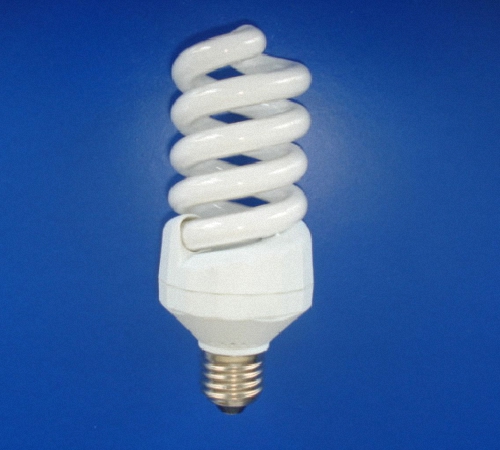
The second option is characterized by quiet operation and better work quality.
The size of the socle is:
- E14 has a threaded opening of 1.4 cm and is installed in reduced household cartridges;
- E27 - 2.7 cm is suitable for installation in standard cartridges;
- E40 - 4.0 cm are distinguished by built-in electronic ballast.
Energy-saving lamps are internationally marked, which characterizes the brightness of the light emitted by the lamp. To find the color rendering index, multiply the first digit of the mark by 10. The interval of the indicator is from 60 to 100.
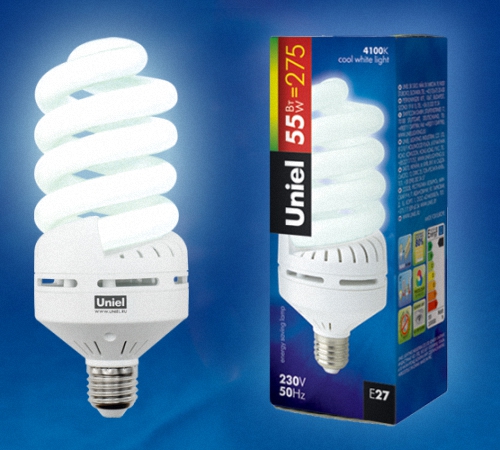
The second and third digit of the labeling is the Kelvin temperature, divided by 100. For example, buying a lamp with an index of marking 827, you need 8 * 10, and 27 * 100. The result is a color rendering index of 80, and the temperature and color are 2700.
To illuminate the metro, shops, public buildings use energy-saving lamps with marking from 2700 to 3500 K.
The best variant of illumination of a dwelling premise is provided ЭСЛ with marks 830, 840.
To increase the service life of energy-saving lamps, you must follow certain rules:
- avoid voltage fluctuations, it is possible to install voltage regulators;
- limit the number of times the lamp is turned on and off.
Elimination of basic malfunctions of energy-saving lamps
The causes of malfunctions in the energy-saving lamp:
- use of substandard components in the manufacture or repair of a lamp;
- use of parts that do not fit the existing voltage;
- the constant operation of the lamp leads to overheating of the housing and the failure of the lamp, since there is no ventilation in the flask, all parts quickly heat up.
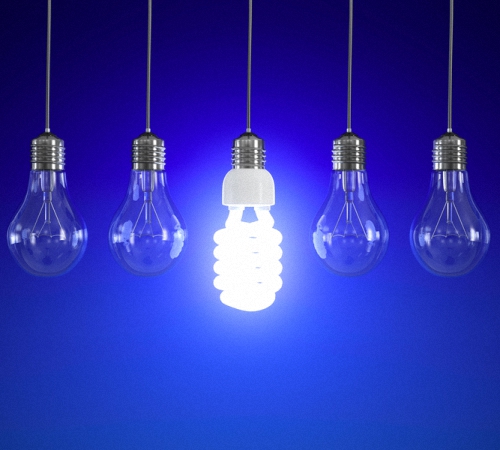
At the end of the energy-saving lamp, first check the integrity of the lamp threads. The darkening of the glass energy-saving lamp is the main sign that the thread is cut. To restore such a lamp, use a 10 Ω 0.25 W resistor, remove the diode that shuns this spiral. After this procedure, when the lamp is started for 10 seconds, flickering will occur.
In consequence of violations of the thermal regime, the transistors fail. To replace the transistors, first remove these elements, and then install the new ones. When choosing transistors, be guided by the series 13003.
Name of transistors depending on the power of energy-saving lamps:
- from 1 to 9 W - 13001 TO-92;
- 9 W - 13002 TO-92;
- from 15 W to 20 W - 13003 TO-126;
- from 25 W to 40 W - 13005 TO-220;
- from 40 W to 65 W - 13007 TO-200;
- 85 W - 13009 TO-220;
To eliminate the flickering of an energy-saving lamp, you need to check the capacitor. In consequence of an increased voltage, a breakdown occurs. In this case, replace the capacitor.
If energy-saving lamps burn out quickly, then there is no ventilation, for example, in spotlights or there are sudden voltage surges. To do this, install a stabilizer.
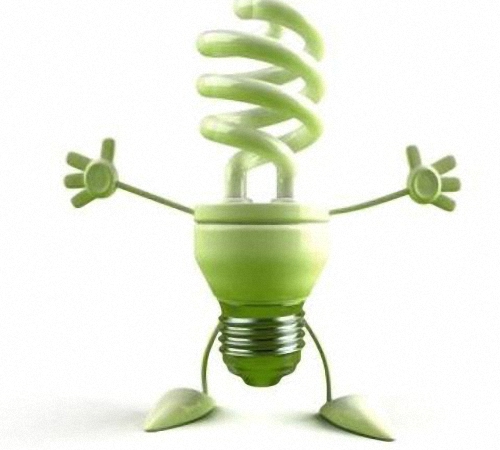
Energy-saving lamps - the effect on human health
Before considering the question of the effect of energy-saving lamps on human health, let us consider the main advantages and disadvantages of this device.
Advantages of ESL:
- long term of use;
- use of a small amount of electricity;
- a warranty that allows replacement of the lamp;
- presence of a stable light flux;
- use under high temperature limits;
- the choice of the type of lighting.
Disadvantages of ESL:
- high cost, compared to conventional light bulbs;
- in case of mechanical damage, mercury penetration into the environment is possible;
- a rather large socle part, which does not fit in all the lamps;
- scientifically proven harm of energy-saving lamps on human health.
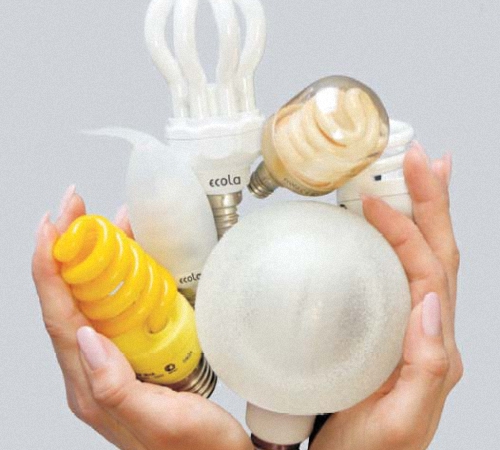
When researching energy-saving lamps, it was revealed that these devices have a high level of electromagnetic and ultraviolet radiation, so it is recommended to install energy-saving lamps at a distance of 300 cm from a person. It is not recommended to install such lamps in fixtures or appliances, near which a person is constantly located. Consequences of electromagnetic radiation:
- exacerbation of chronic diseases;
- influence on the nervous and cardiovascular system;
- acceleration of the resource forces of the organism.
A large number of included energy-saving lamps harm not only human health, but also negatively affects electrical safety.
The mercury content in one light bulb can easily poison a large number of people, so it is recommended to take these devices for disposal in special institutions. The long-term effect of minimal mercury vapor also negatively affects human health and leads to micromericualism-mercury poisoning, accompanied by increased fatigue, drowsiness, apathy, and other symptoms.
For people who are sensitive to ultraviolet light, such lamps are a great danger. After all, through the flask, a small amount of ultraviolet comes out, which causes skin mutations. The ultraviolet light of energy-saving lamps presents the greatest danger to the eyes, so do not use energy-saving lamps at a distance that exceeds 200-300 cm.
Energy Saving Lamp Specifications and Review Manufacturers
Energy-saving lamps can be bought at any electronics store or in the construction market. Among the variety of brands that make ESL, it's hard not to get lost, so let's consider the main manufacturers of energy-saving lamps:
1. OSRAM (Germany) - energy saving lamps that have different shapes: spiral, ball, circle, candle, socle and more complex combinations.
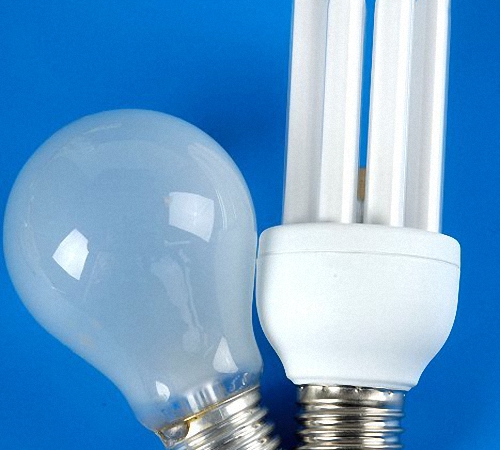
Varieties of energy-saving lamps OSRAM:
- integrated type;
- nonintegrated type.
The first option is automatically started, and the second one requires a special starting device in the lamp holder.
This manufacturer of energy-saving lamps has only positive reviews. Lamps do not burn out and perform functions for a long time.
The price is from 2 to 6 $.
2. UNIEL (Russia) - presents three series of energy-saving lamps:
- Premium - ESL have improved characteristics and a long service life;
- Promo - have a high luminous flux and the first class of energy consumption;
- Standard - lamps have the form of an open spiral, save 80% of electricity.
A variety of shapes: a spiral, a pear, a semi-spiral, point lamps, reflectors, candles, linear lamps, modular, floodlight and ultraviolet lamps.
Price: from 3 to 5 $.
3. Philips (Holland) - presents a large selection of energy-saving lamps, which differ in the variety of shapes, colors and applications.
Features:
- high energy efficiency;
- a variety of color temperatures;
- no heating of the bulb.
The price is from 4 to 7 $.
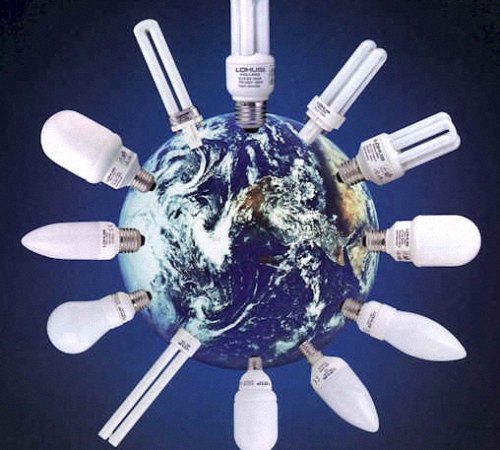
4. Camelion (Hong Kong) - energy-saving lamps, which have a number of advantages:
- the service life is eight times higher than that of a conventional light bulb;
- use in both open and closed luminaires;
- when the lamp is on, there is no flicker;
- radiation of soft light that does not blind the eyes;
- heat resistance from -25 to +50 degrees;
- a wide choice of capacities and models of lamps;
- three series: Classic, PRO and Eco.
The price is from 2 to 5 $.
5. Cosmos (Russia) - represents energy-saving lamps that emit maximum light with minimal dimensions.
Using:
- bedroom or living room to create a romantic atmosphere;
- lamps are made in an unusual decorative form, which allows them to be used without a lamp;
- residential or industrial premises;
- lighting decorative ceilings or exhibition centers.
The price is from 2 to 4 $.
6. Wolta (Germany) - used for lighting workplaces or living quarters.
Features:
- compact models;
- wide range of applications;
- economy;
- high reliability and durability.
The price is from 4 to 9 $.
7. Vito (Turkey) - energy saving lamps, which are represented by the Spiral and Vito T8 series.
Characteristic:
- operation for 8000 hours;
- spiral shape of lamps;
- colors: from warm white to cold blue;
- strong body, to prevent mechanical damage.
The price is from 5 to 7 $.
8. General Electric (USA) - presents a variety of models of ESL.
Features:
- line of energy-saving lamps Link - is a "smart lamp", which are controlled by a smartphone. The cost of such devices is from 25 to 60 $;
- the company has created vacuum incandescent lamps, which are more than 30 years old.
The price is from 5 to 9 $.
With a power consumption of 100W or more. The initiators of this event in every possible way promoted this decision, motivating by the fact that the use of lamps with large capacities leads to an overuse of energy. No one argues that compact fluorescent lamps are capable of giving a light flux equal to the light flux of the incandescent lamp, while using the energy about five times less. This is certainly a plus. But all the rest for today is, at least, doubt. Of course, the technology does not stand still, and compact lamps are not the same ones that were with their mass appearance in our market a few years ago. And there is a hope that after a while they will get rid of some of their shortcomings, will become more friendly towards the consumer. In the meantime, we will have to use what we have in our stores to date.
Therefore, let's talk about what awaits us in operation energy saving lamps. In most articles devoted to this topic, the first place is written about the high price of lamps with the proviso that the price will steadily decrease, and even at today's prices, the operation of the lamp is more beneficial for the consumer: high cost must be compensated by a sharp decrease in payment for consumed energy. Indeed, even now the cost of owning an energy-saving lamp is significantly lower than the cost of owning an incandescent lamp. But the high price of compact fluorescent lamps is not a major drawback.
The incandescent lamp has a huge advantage in comparison with all other light sources, namely that visible light is obtained by heating the filament, which makes it possible to obtain the color temperature of the lamp ideal in terms of color rendition. It is through this that we see all objects as they would be if placed under direct sunlight. Here it is manifested first serious flaw energy saving lamps. On the packaging of some of them, the color temperature is 2700K, that is, they should give the same color as a regular lamp. What is happening in reality? When switched on, during heating, the lamp gives a lower color temperature than indicated on the package. In a few minutes it becomes equal to the declared value and ... continues to grow further. A few hours later, the color temperature of the 2700K lamp will be about 4000K, that is, it will not glow with a warm yellowish light, but daylight, such as that given by ordinary fluorescent lights. At first glance, there is nothing wrong with this, if not the color rendition. Imagine a wallpaper, curtains on the windows, furniture that will gradually change its hue in the light of such lamps. This phenomenon significantly reduces the comfort of being in the room. While the change in the color temperature of energy-saving lamps could not be completely overcome.
The second drawback: dimensions and shape. The design of energy-saving lamps is such that the presence of a tube, as it does not bend, can not be avoided. Accordingly, the tubular lamps in our chandeliers in most cases look like a foreign element. To date, the only thing that's done is put on a plastic candle-like, pear-shaped and other forms of a decorative bulb that we are accustomed to using. This masks the tube when the lamp is off, but when it is on, the tube is clearly visible, and the light flux falls due to the absorption of the material by the bulb. In addition, the integrated lamps strongly protrude beyond the dimensions of the plafonds due to the control unit built in between the plinth and the tube. At the moment, this problem is also not solved. Lamps, in which the ballast fully fits in the base, does not exist yet, and non-integrated lamps, i.e. those in which the gear are placed separately, are suitable only for certain brands of luminaires designed specifically for such lamps.
The third drawback: failure or drastic reduction in service life when misused. On the boxes of energy-saving lamps large figures write service life: 6000, 8000, 15000 hours and so on, but many manufacturers do not write that such a service life is possible with strict observance of the rules for operating lamps of this type, namely the switching-on / off frequency per day, allowable time between these operations, such as a lamp, lamp orientation in space, voltage quality, etc.
For example, a lamp with a declared service life of 8,000 hours, on the package is written in small print, that this period is achievable under no more than four cycles of switching-on / off per day with an interval between operations of at least 20 minutes, otherwise the manufacturer does not guarantee serviceability and compliance with the service life . Now let's imagine if such a lamp fits in the hallway or the toilet? Of course, there are lamps, the number of switching cycles is not limited, but they are expensive.
The fourth drawback: incompatibility with dimmers (dimmers). It's all simple. Most energy-saving lamps can not be adjusted. They just turn off immediately when you try to dim the light. With dimmers it's more difficult. Not all of them are suitable for controlling such lamps. The type of lamp for which the dimmer is intended is indicated in the passport and, as a rule, under the front panel. An attempt to adjust the light of an energy-saving lamp with a dimmer designed only for incandescent lamps will cause the dimmer to fail after a while. Thus, switching to energy saving lamps will require replacement of the dimmer (as a rule, a more expensive model).
The fifth drawback: at night, the lamps begin to flash spontaneously for a fraction of a second. The frequency of flashes can be from a few minutes to several hours.
The appearance of such flares is due to the fact that when the switch is turned off, the circuit still remains closed. As it happens: a closed circuit is formed due to switches with backlighting, when the current passes through the control lamp or because of leakage due to contamination inside the switch body (and it may be unnoticeable to the eye). To get rid of the night flashes, it is best to put a two-pole switch. It breaks the circuit immediately along two wires and is guaranteed not to allow voltage to the lamp.
The sixth flaw: in a closed lamp, the lamp quickly heats up, which causes the change in color temperature to occur even faster (as discussed above) and, most importantly, the overheating of the ballast which easily removes the lamp. In the course of our experiment, a cheap lamp of one of the eastern manufacturers with a power of 20W installed in the fixture PSH-60 with a chatter and smoke burned out after about 40 minutes. When the lamp was opened, the gear box was still very hot.
Seventh drawback:conventional energy-saving lamps will not be turned on at low temperatures, and during operation, low temperature reduces the light output.
Here everything is simple: the lower the concentration of mercury vapor in a particular lamp, the worse it will behave or simply will not work. For low temperatures, a special series of lamps have been developed, but they are very expensive and almost never occur in stores.
The next problem is that the lamps contain mercury, so they must be disposed of according to certain rules. Question: who at his house saw a tank for used lamps or knows the address of the point of reception? Consequence - all spent time will be in trash cans and will poison the space around the tanks and landfills.
Of course, energy-saving lamps have certain advantages. They can be well used in industry, public buildings, but in our opinion, the rejection of the turnover of lamps with a power of 100W and above completely, first of all in the residential sector, is premature.
There is an opinion that against the background of insufficent shortcomings of energy-saving lamps, incandescent lamps with a declared power of 99W can appear on the market, which is not prohibited by law. And it is quite possible that the demand for them will be very significant. Well, those who decided to fully switch to energy-saving lamps, we advise before buying to pay attention to the limitations and conditions set by the manufacturers.
